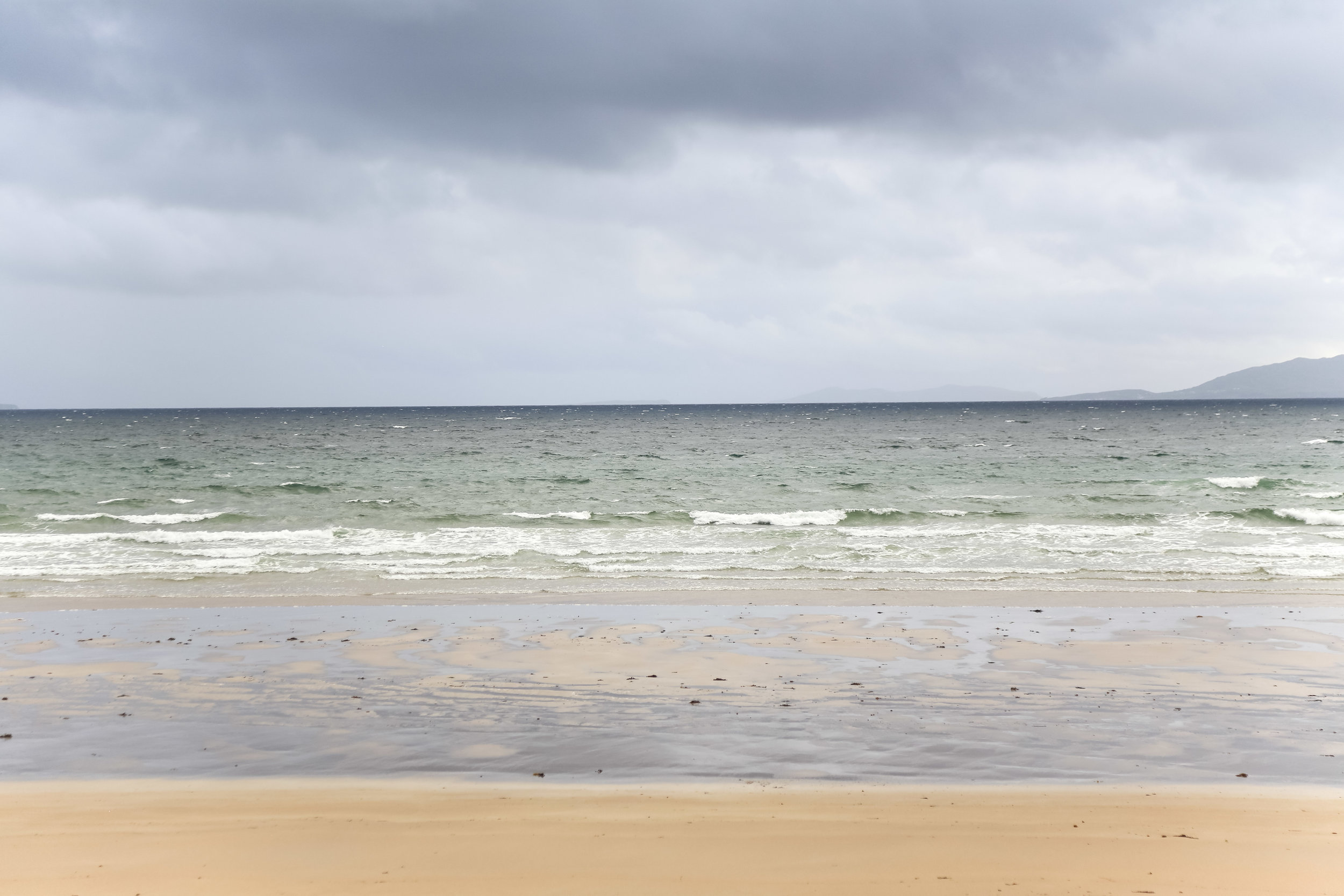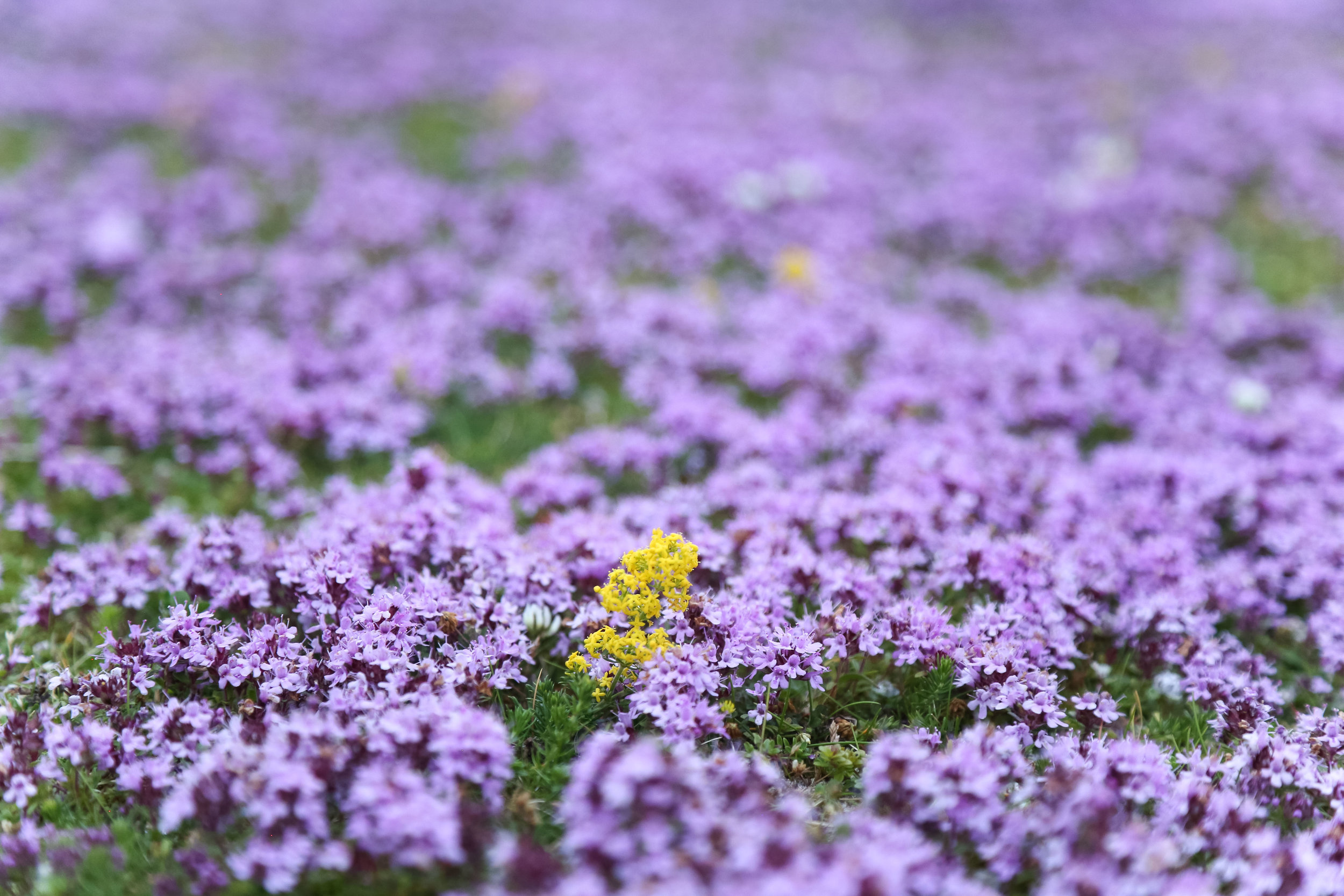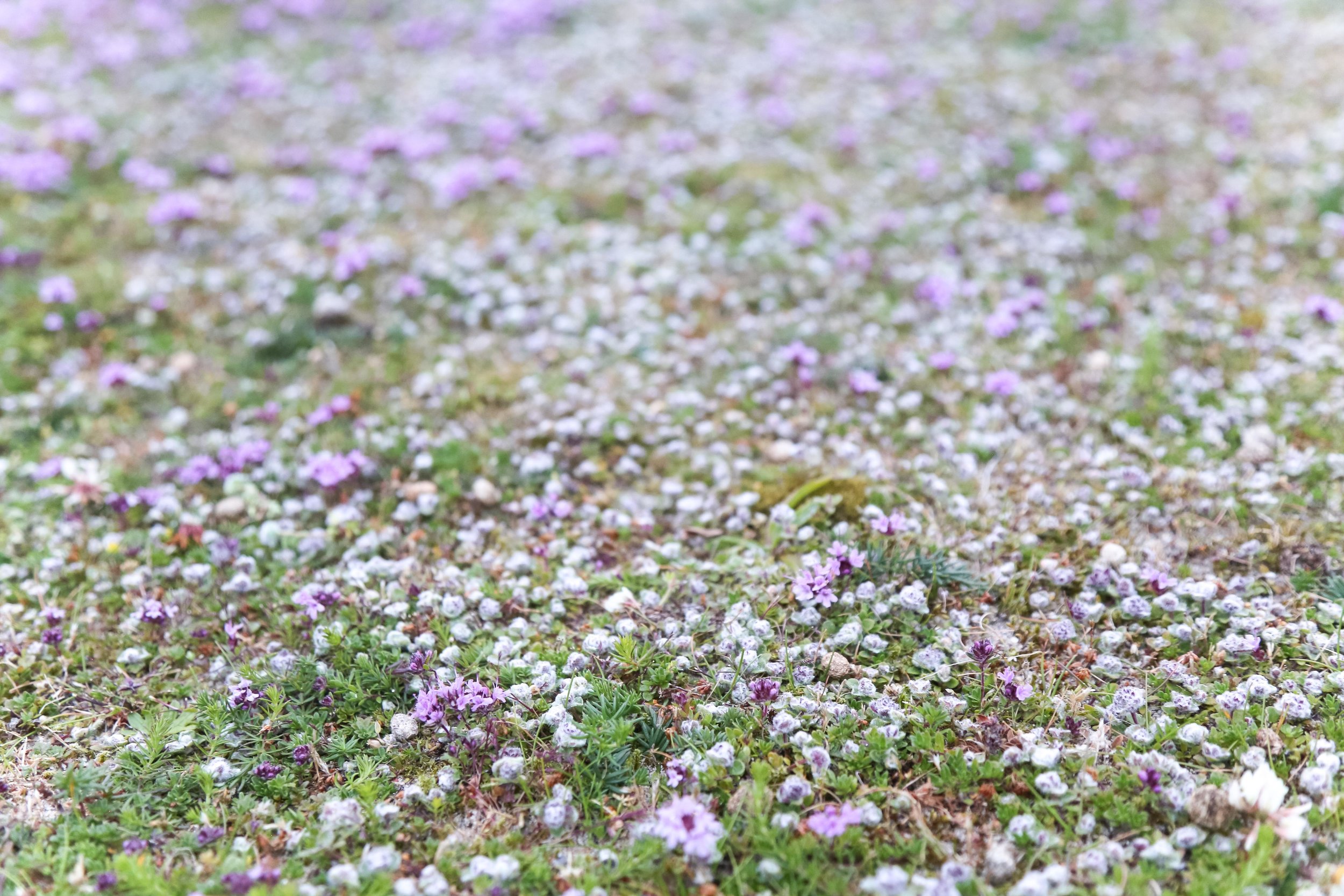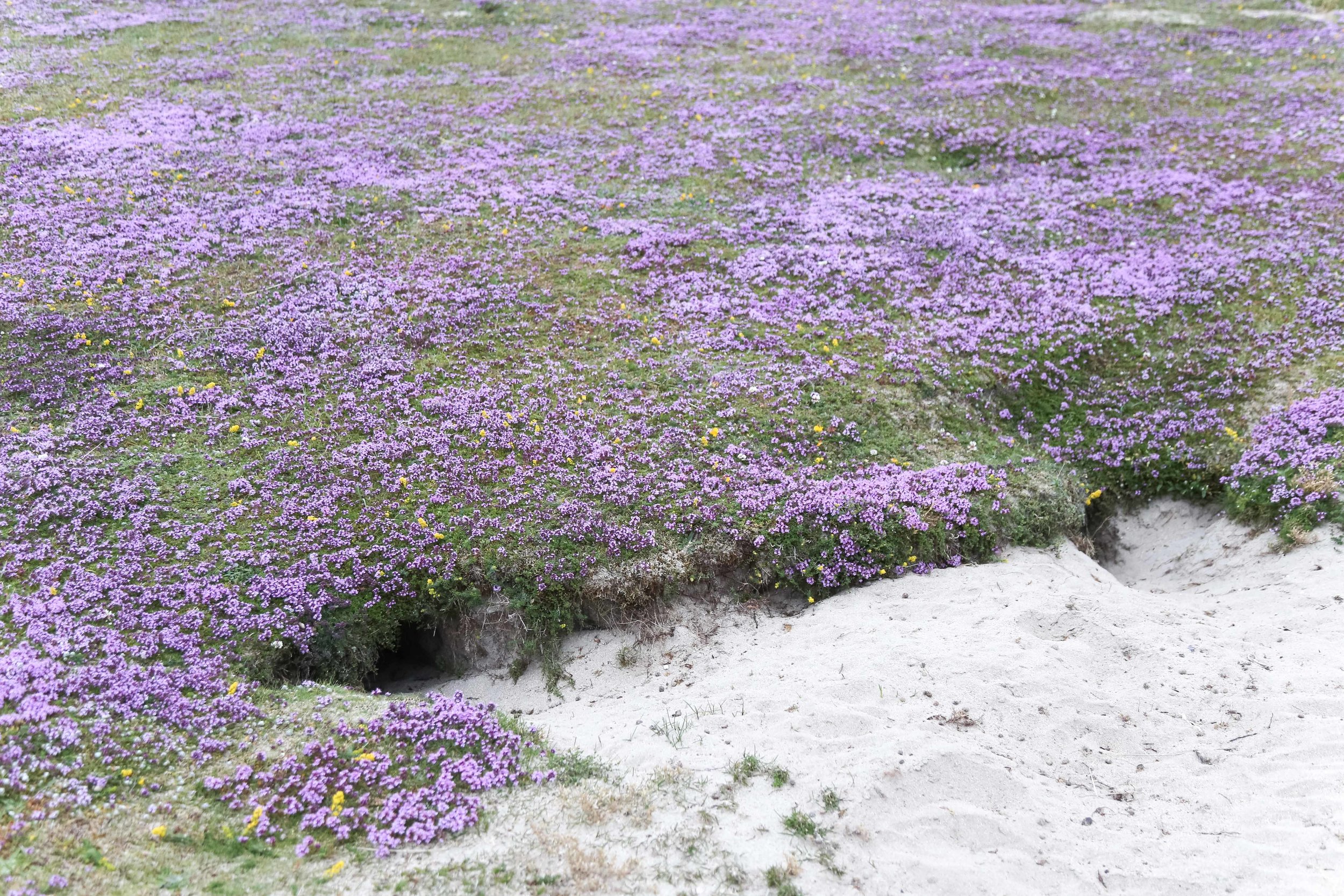HABITAT: Rare coastal meadows
Machair grasslands are one of the rarest habitats in Europe. And, lucky for us, it is on our doorstep. We went to explore where the wild thyme blooms and rare birds thrive….
Our dog Woody runs into the camera’s frame on the machair grasslands close to Mulranny, Co Mayo.
It was a balmy late Summer evening. We scrambled up the hill, after the dog and what a surprise we found, hidden behind the dunes. All across the ground in front of us was a dense carpet of tiny purple flowers. The vibrant purple hue was almost glowing in the twilight. I kneeled down to look closer - I knew what this was; it was thyme. It was a carpet of tiny wild thyme.
Machair grasslands are flat sandy plains that form between sand dunes and (often) an inland lake or rivers. From mid-June the machair close to Silver Strand at Thallabawn, Mayo is glowing with wild thyme flowers.
Wild Thyme growing at Silver Strand, County Mayo
Later at home we began to reserach this magical place and learned that we had stumbled upon a ‘machair grassland”. Here is what we learned.
Firstly, machair is one of the rarest habitats in Europe. It occurs only along the northwest coasts of Ireland and Scotland. (In Ireland machair grasslands can be found in locations between Galway Bay and Malin Head).
Along with its rarity the machair is also very beautiful. In the summer months, the flat plains of sandy machair is ablaze with the most beautiful tiny wildflowers.
Factors needed for machair to occur:
Sandy beach where the sea shelves gently
Beach is facing west or south-westerly
Sand has a very high volume of shell fragments (this is referred to as a calcareous lime-rich sand)
Frequent high winds
High level of rainfall
Low lying land close to the water table
Cool climate
Low level of animal grazing
Machair is uniquely described as ‘a natural landscape as a result of human activity.’
The first stage of machair grasslands happens when winds at low tide blow sand inland and a small dune ridge occurs.
After this, in winter months, stronger storm winds blow sands further and further inland, often dropping the sand up behind the sand dune ridge.
Over time the shell rich sands form a grassy flat plain, in the sheltered area behind the dune ridge.
In summer these grassy plains are sheltered by the dune ridge and in winter the plains are often flooded. Ireland’s frequent rain (and high water table) mean that the sand is wet and heavy and further windblown erosion doesn’t occur.
A unique range of herby lime-loving plants begin to flourish. These are plants that can tolerate wind exposure, high salt levels and fluctuating water levels. (very dry sandy soil in summer, sodden and frequently flooded in winter)
Finally, farmers allow animals to graze on this commonage land from time to time. This keeps the grasses short and is the final ‘human intervention’ factor in the creation of this ‘natural landscape’.
Flat plains of tiny flowers make tiny flower bouquets.
Typical flowers at home in this habitat:
Wild thyme (blooming from mid-June), daisy, birds foot trefoil, ladys bedstraw, sphagnum mosses, liverwort and rare petalwort.
Typical animals at home in this habitat:
Birds, plants and insects. Scarce birds, including Corncrake, Chough and breeding waders, such as Dunlin, Lapwing, Ringed Plover and Oystercatcher all breed on machair. Rare insects such as the Belted Beauty moth and the Great Yellow Bumblebee. Rabbits.
Notes:
Irish machair is designated as a priority habitat under the EU Habitats Directive and as such Ireland has special responsibility for its conservation.
The machair grasses we visited in this post are Silver Strand, Thallabawn, Mayo and Mulranny, Co. Mayo.
Further reading along with a map of machair habitats is available here (sign in required).
If you are on a beach or commonage land with grazing animals in sight always keep your dog on a lead.
Practice the principles of ‘Leave No Trace’ when exploring wild landscapes.
About our “Habitats Series”
What makes a great place to live? What are the conditions that support life to thrive and flourish? What is the right balance between shelter and exposure? As architects and designers we ask these questions as we shape the places we live. In this series of posts on ‘Habitats’ we learn about shelter and habitat by turning our eye to the natural world.
Along our coastlines strong winds and waves work together to carve and shape a range of niches, indents, pools and shelters. And it is in these pockets of shelter where wild animals and plants build their homes. From sand dunes, to rocky coastlines filled with seaweeds, sea cliffs and rare machair grasslands, each habitat is the perfect home for someone.














